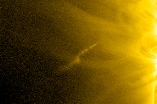Comet Lovejoy Still Visible
Since Comet Lovejoy survived its remarkable, slingshot journey around the Sun (most notably on Dec. 15-16), it has regained a long tail (pointing away from the Sun) and was and is still visible to NASA’s STEREO (Ahead) wide-angle imager (Dec. 17-29, 2011). Several faint particle clouds can be seen blowing way from the Sun as well.
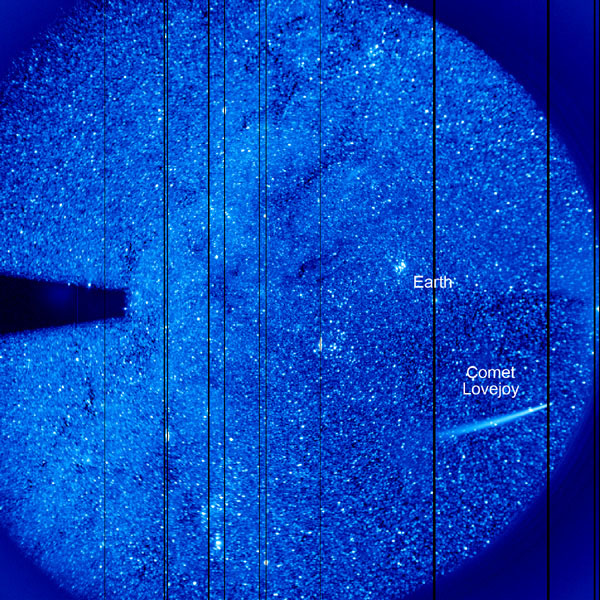
25 December 2011
Yuri Beletsky, professional astronomer, (ESO) has kindly sent us one of his latest images of comet Lovejoy from Chile:
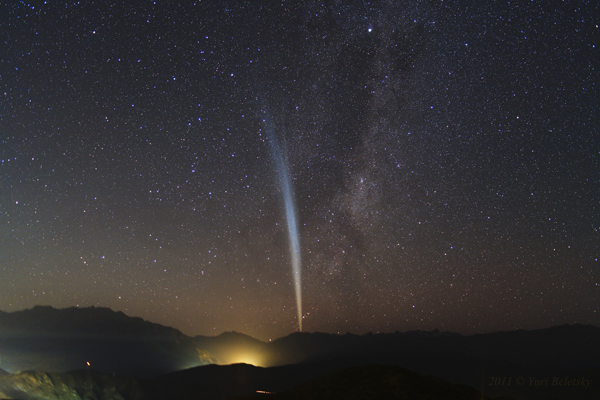
Willie Koorts (SAAO) shares with us his image of the Comet C/2011 W3 (Lovejoy). "After the nice view we had the previous day (24th), we were hoping for a better view this morning by getting up earlier but threatening cloud was a worry. We (Johan le Roux and myself) planned our shot and found a nice location anyway and set our alarms for 02h45 this morning (Christmas morning). The weather looked awful and I was about to give up, but Johan urged we should still go to the Strandveld Museum in Franskraal. It was just as well since we had occasional gaps in the cloud, good enough to see the comet which faded noticeably since the previous day. We even had ISS flyby but the comet was clouded out at that time. Below is this morning image from Franskraal."
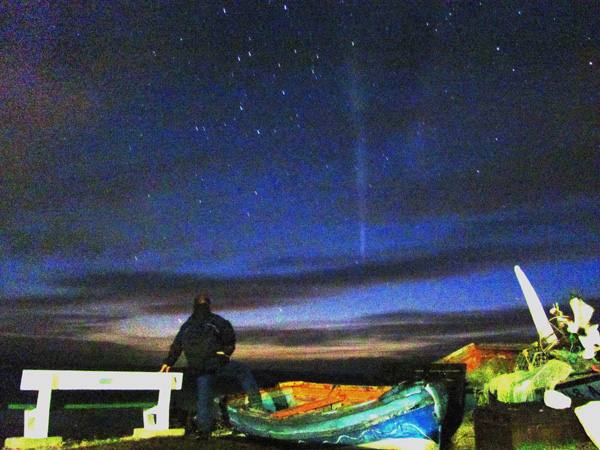
Another image from Sutherland by Simon Fishley, SAAO, featuring comet Lovejoy and the South Africal Large Telescope (SALT):
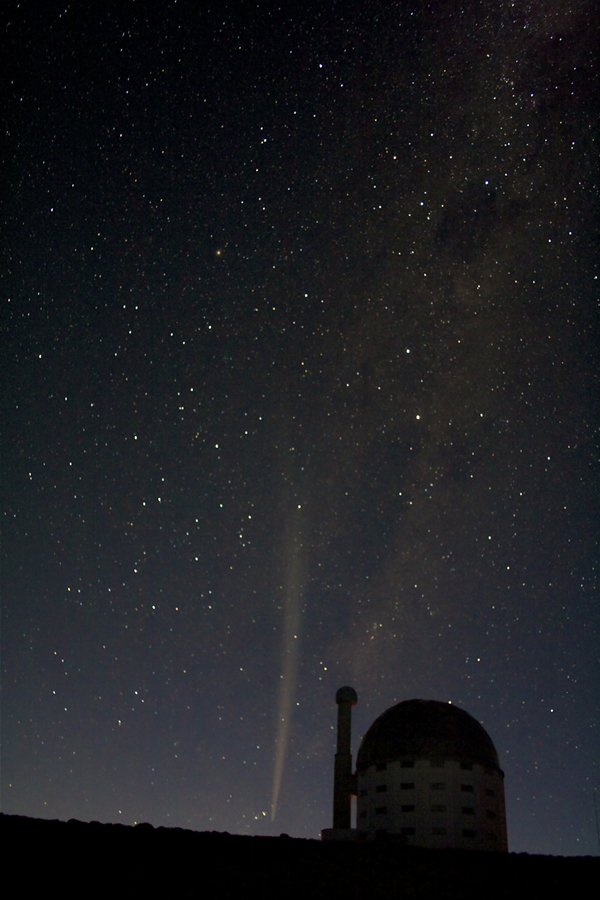
24 December 2011
What a wonderful visitor we are having this festive season! Now, would someone please send us an image of the comet Lovejoy, rising behind the Christmas Tree! Guess what nickname the comet will get..
"Seems to be a Christmas Comet!"- Says Dieter Willasch, who took few images of the comet Lovejoy this morning from his observatory in Somerset West (Western Cape, South Africa)
OT: Compare the tail lengths in Dieter image and in Simon's image of December 23: it just isn't getting any shorter. In fact it appears longer, but the dust tail looks now closer to the Ion tail. Is that right?
-dieter.jpg)
-dieter.jpg)
23 December 2011
Below is an image from the observing plateau at the SAAO near Sutherland, kindly sent to us by Simon Fishley, observatory staff member.
Simon writes: "I was hard pressed to get this shot as the wind was howling, the temp was 7C, there was a large bank of cloud rolling in from the right of the frame and I left my remote trigger in my room. I was only able to get a few shots before I was clouded out thus I did not have time to tweak exposure times, ISO etc., thus it's quite a noisy image. Nevertheless I am well pleased with the result. Structure in the foreground is the 1.9m Radcliffe Telescope."
OT: What is nice about this image, is the fact, that it shows the comet in full size. It is important to get the maximum of your equipment in case like this. It might be not the most beautiful picture of the comet Lovejoy, but it clearly shows the comet's dust tail, stretching for 20 degrees, ending in the center of constellation Lupus, Ion tail, constellation Triangulum Australe and even one of the "pointers"-star Alpha Centauri (upper right portion of the image).
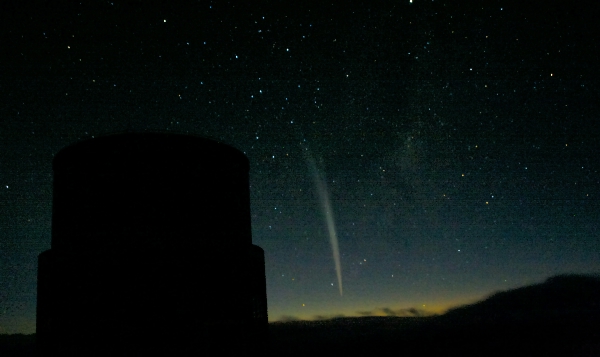
iWim Filmalter, one of the very few , who enjoys astro-photography "the old way" - using his film camera, sent us this image of the comet Lovejoy, taken on December 23rd from Eastern Cape:

22 December 2011
After several cloudy mornings in Johannesburg, I finally have seen the Moon at about 3:45 am trough the window and rushed to the observatory. Of course the clouds were exactly where the comet would appear, so I had to wait until 4:15, when I took the fist shot of the Comet Lovejoy. Obviously, it came out exactly where it was supposed to be this morning- just behind the tallest tree on the street. Two days ago it would rise just on the left of the same tree. So, have I seen the comet? No, but I have seen two tails: one of the comet and another one of the Scorpius. After examining and measuring the images, I've come to the conclusion, that the comet's tail extends from the East to the West for approximately 11 degrees! This means, that one must use 80 to 100 mm lens with DSLR to be able to fit the visible tail completely in portrait orientation.
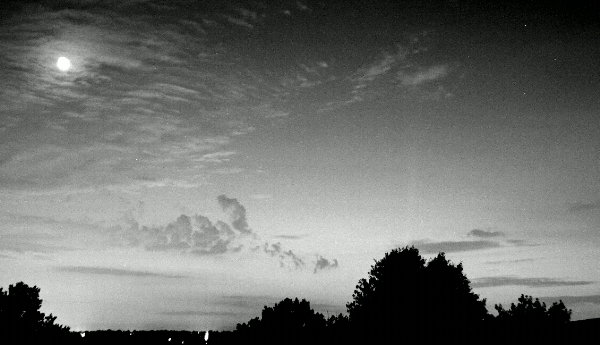
Image by O.Toumilovitch
Up in the North of South Africa, in Louis Trichardt , Kos Coronaious continues enjoying somewhat better seeing conditions and sends few more images from this morning. Following his observations a day before, Kos notes, that Comet is still a naked eye object but has dimmed considerably. I have slightly increased the image contrast in Photoshop to improve visibility of the Ion tail.
.jpg)
Image by K,Coronaios
If two images are compared , it becomes clear, that I have captured only the brightest part of the tail, just before it splits into two. Well, I could have seen three tails.

